Moving Human Blood Around Arizona
Published 2021-08-06
I’d never thought about the logistics of moving donated blood around. The actual donation part is known to be a universally good thing to do, but I’d never searched out what happens next until I heard a fellow pilot talk about volunteering to move platelets around Arizona.
Arizona is a fairly mountainous state, in addition to simply being large. It’s at best a three hour drive from Phoenix to Yuma (each way) and closer to four hours to points northeast in the mountains, like St. Johns or Holbrook. Yet folks everywhere donate blood, and folks everywhere need platelets.
It turns out that freshness for blood matters quite a bit for processing. Since a lot of mobile blood drives collect whole blood, the longer a donation waits, the more the platelets inside clot, and the fewer can be processed out. Also, while certainly one wants the whole blood to drop to cold temperatures before and during transport, there’s a balancing act of avoiding freezing the blood prematurely, as that, too, limits what can be processed out of it.
Clearly it’s advantageous to process the blood as soon as possible after a donation — however, in Arizona, all the processing happens centrally here in Phoenix.
Mountain towns here in Arizona donate blood, too, but with four hours of cross-country driving added to the processing time — sometimes in the desert heat — the obvious answer is to simply freeze their donations and accept the limitations that sets on the usefulness of the blood.
However, some pilots in 1984 partnered with an Arizona blood bank to provide rapid air transportation for these communities’ blood donations. Using aircraft — over the mountains, especially — changes the equation dramatically. St. Johns, AZ to Deer Valley, AZ is a 65 minute flight, versus a more-than 4 hour drive.
And so I realized that this idea of pilots volunteering to move blood (and platelets) around the state wasn’t only an excuse to write off some flying time on their taxes.
I signed up.
My First Missions
The Flights for Life organization had very thorough online (textual) training, combined with AOPA’s Public Benefit Flying course, but there’s no mentorship for that first mission, just the rendezvous times and locations, a few phone numbers, and your experience as a pilot to make the right choices.
Late in the afternoon on a Wednesday in October 2020 I fueled up my Skylane and flew to Springerville, AZ, just about a 1 hour flight. I arrived as the shadows got long, and within 2 minutes of opening the door of the plane, the blood drive’s van pulled into view.
The crew for the blood drive, 7 people in scrubs, wheeled a cart with nine boxes straight across the ramp to me. The mission was to transport seven boxes, but the blood drive was more successful than anticipated. I’d done the math that I could easily transport more than six hundred pounds of cargo with the fuel load I had, but the problem wasn’t the weight.
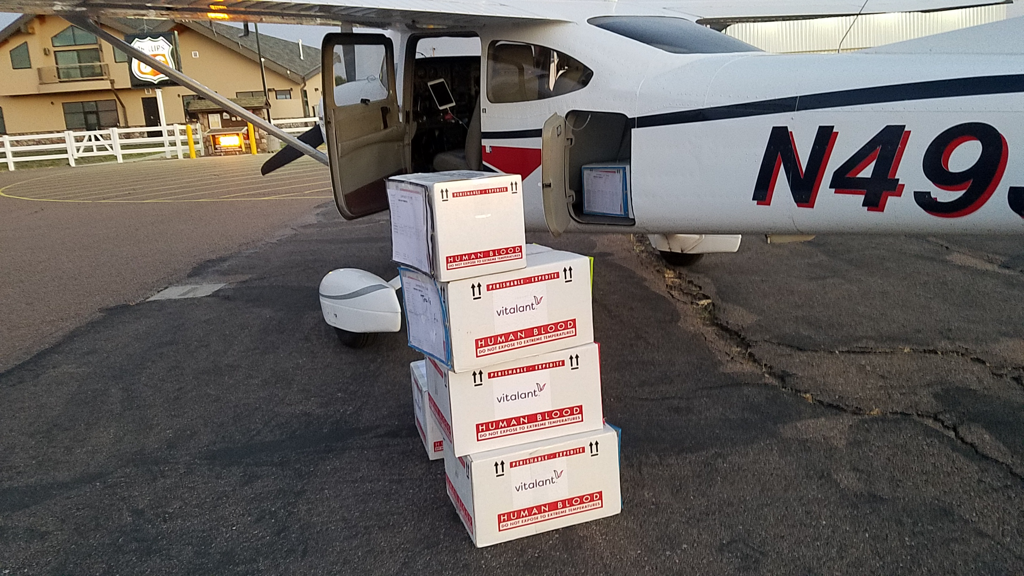
The blood drive crew watched, curiously, as I played a form of Tetris to figure out how to finangle so many boxes into the aircraft. To their eyes, I got it figured out — there were no more boxes on their cart. We wished each other safe travels, and they left. I got out my weight-and-balance calculator and made sure the configuration of boxes I came up with was within a safe one.

It was. Cessna Skylanes are like sky-trucks.
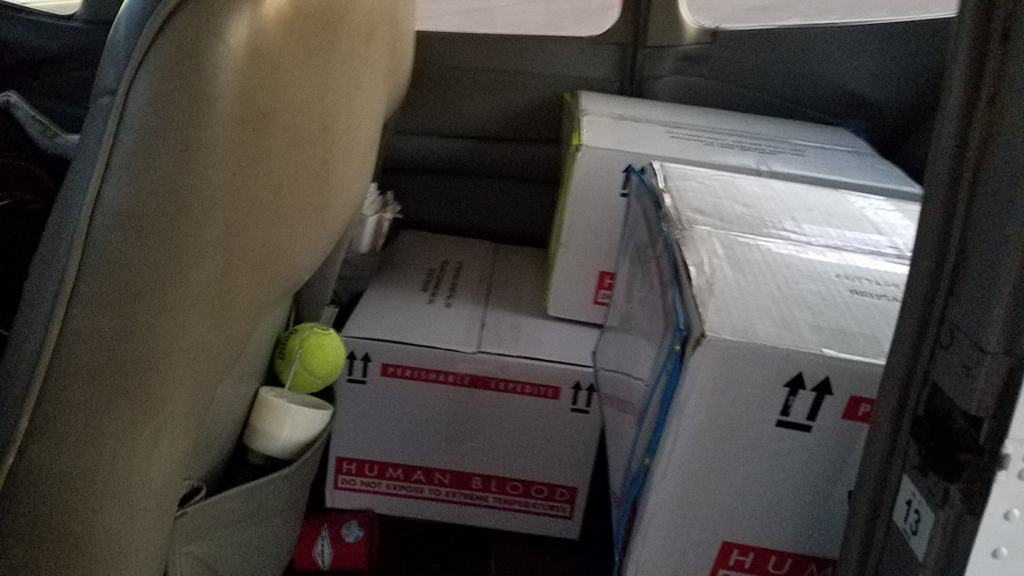
The trip back to Phoenix was a quiet flight into the sunset, timed quite well for the fun times over the mountains to still be well-lit, but give the full effect of the city lights at night while coming home.
On this first mission, I took a selfie with the driver that the blood processing center sent to meet me. He was happy to do it, and answer/confirm some of my questions about the blood processing, as he was actually starting his shift and would be personally processing all the blood that evening.
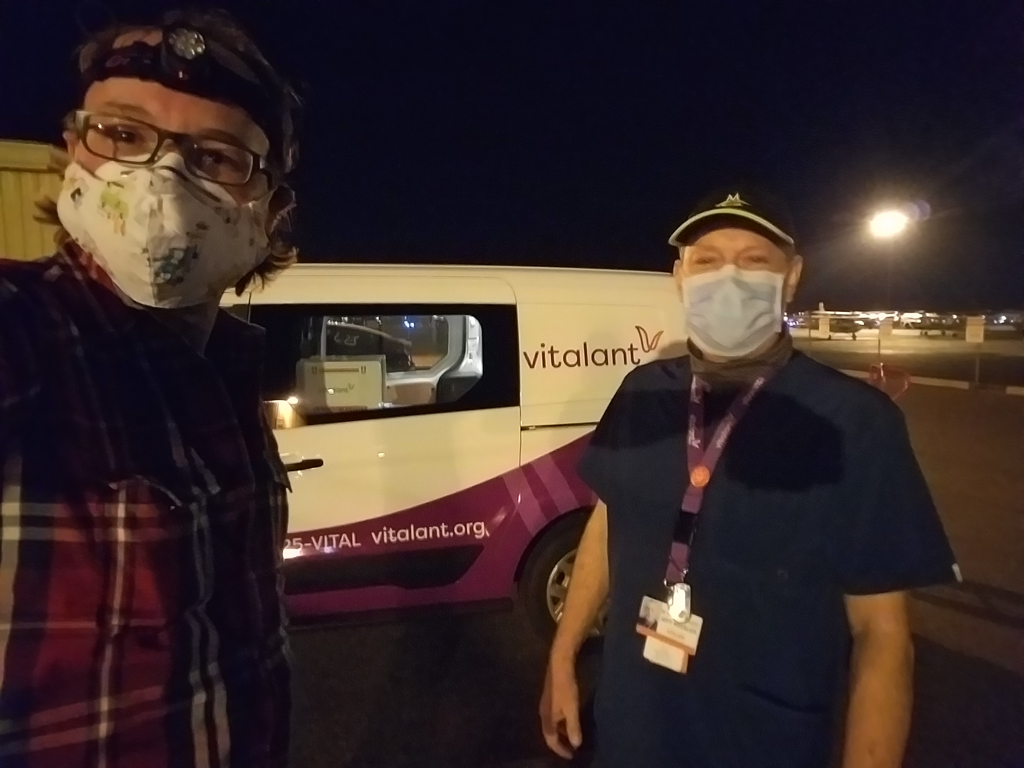
A few weeks later, I did it again. This time I flew to Show Low, AZ: a 50-minute flight that can easily be a four hour drive if there’s traffic along the small roads outside of Payson, AZ. Which there always is.
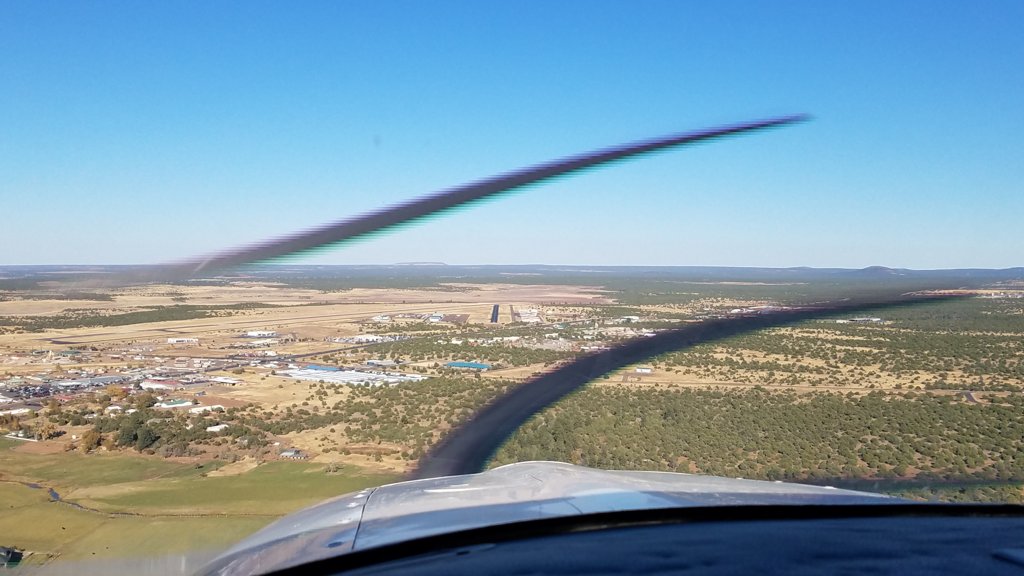
This was a mission that called for two aircraft. I arrived a bit early and refueled. And waited. Neither the second aircraft nor the blood drive crew were on time.
Eventually the blood drive crew arrived with sixteen boxes of blood to transport, and still no second aircraft. The leader of the blood drive and I both made phone calls, and we found out: second aircraft never left, it bowed out for a mechanical issue, but the texts never made it through to let us know.
Okay, so now for extra fun: How many of the sixteen boxes could I take and be safe? The folk for the blood drive encouraged me to take all the time I needed to figure it out. There was no way to get the blood to Phoenix that night except me — any blood I didn’t take would have to go out sometime the following day, the crew leader explained, most likely the following night, due to the way agreements with the trucking companies work.
Keeping in mind I had just refueled, it still turns out that weight-and-balance wasn’t the limiting factor, it was physical dimensions. I fit eleven boxes of blood (330 lbs), and two boxes of paperwork (a few pounds), and refused five more boxes because I couldn’t find places to fit them that would be safe. (If I had straps to hold boxes down, I could have put two more in the front passenger seat, but I didn’t want to risk a tip-over!)
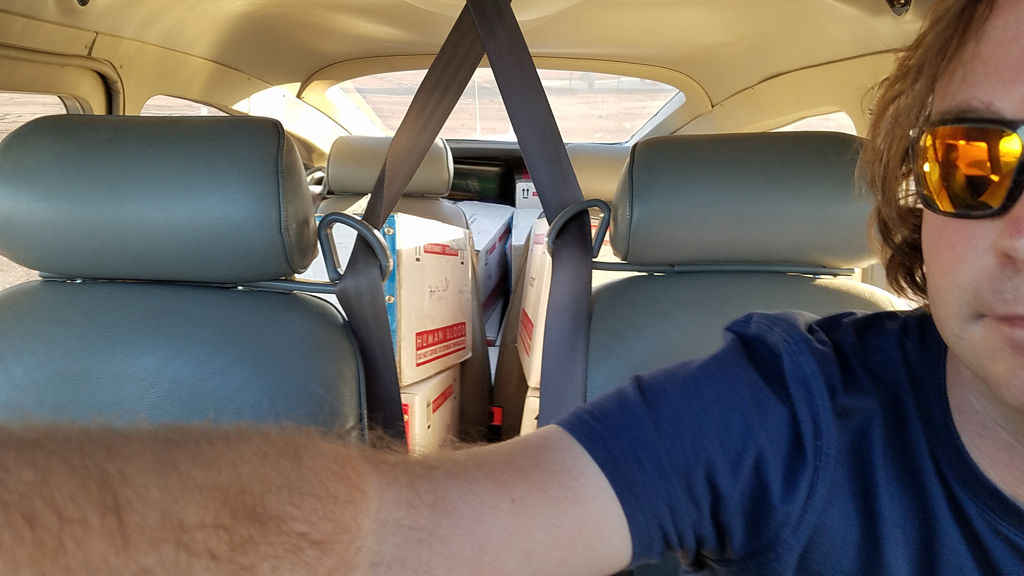
I got a lot of thanks from that blood drive crew; they waved at me as I taxied to depart. When I met the driver in Phoenix an hour later, he likened my plane to “a clown car” because boxes kept coming out.
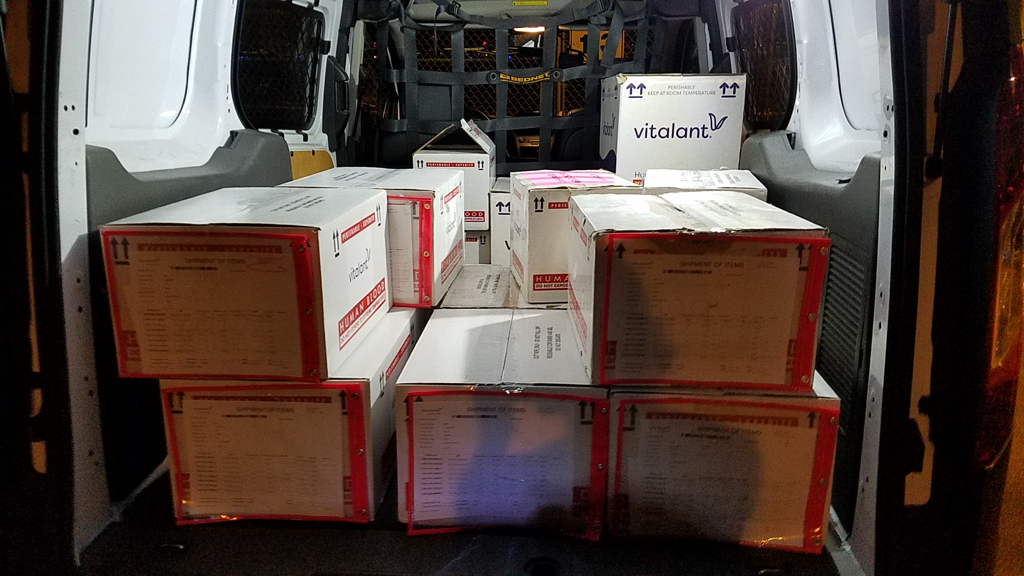
I’ve had more flights since then. Sometimes everything is right-on-time, often it’s a little bit off, but no matter what, the blood gets where it’s going much faster than it otherwise could, and the donations these towns make — which often far outstrip the anticipated volume — are utilized to their fullest potential.
About Platelets
I have yet to fly platelets anywhere, but the gist is that the shelf life of platelets is very short, except for trauma care where refrigeration is permitted. After platelets are processed in Phoenix, every hour before they’re transfused counts, so Flights for Life moves boxes of platelets to outlying hospitals about weekly, though demand varies.
The platelet missions are uniformly first-thing-in-the-morning departures from Phoenix with the cargo, and right now first-thing-in-the-morning isn’t a place of honor in my life. Maybe later.
Commercial?
It might seem like flying blood around would be a commercial pilot activity — and if I were compensated for it, it would be. But here in the US at least, it’s considered to still be private pilot activity to donate my time and aircraft this way.
Public Benefit Flying
I’ve been part of Angel Flight West for a number of years as a driver (think Lyft/Uber, but just for Angel Flight passengers), but I hadn’t flown any charitable missions before. Specifically for Angel Flight, I’ve been watching my logbook climb to the number of pilot-in-command (PIC) hours needed to apply to fly.
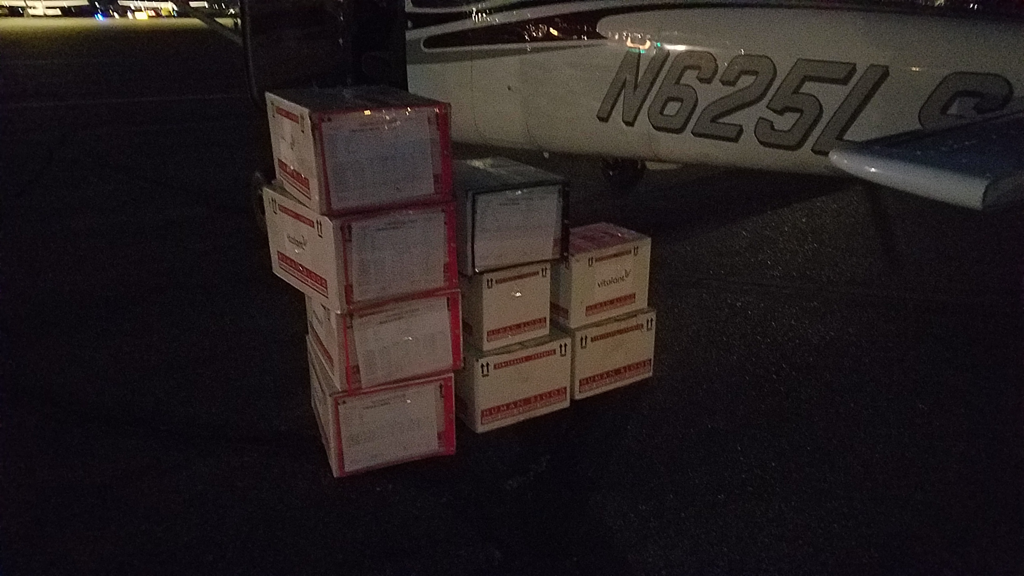
Moving blood around turned out to be a great way to accumulate more PIC time. I’m happy to say that I’m now a full-fledged Angel Flight West Command Pilot too, but that’s for a different post.
A Final Note
Everyone wants to help when you’re pulling out boxes labeled HUMAN BLOOD, whether they’re other pilots, line technicians, or anyone else on the ramp. I guess it’s just admirable enough, without the potential awkwardness of the passengers themselves on Angel Flights, where I swear everyone goes out of their way to pretend there’s nothing amazingly cool about those. But they are super cool.
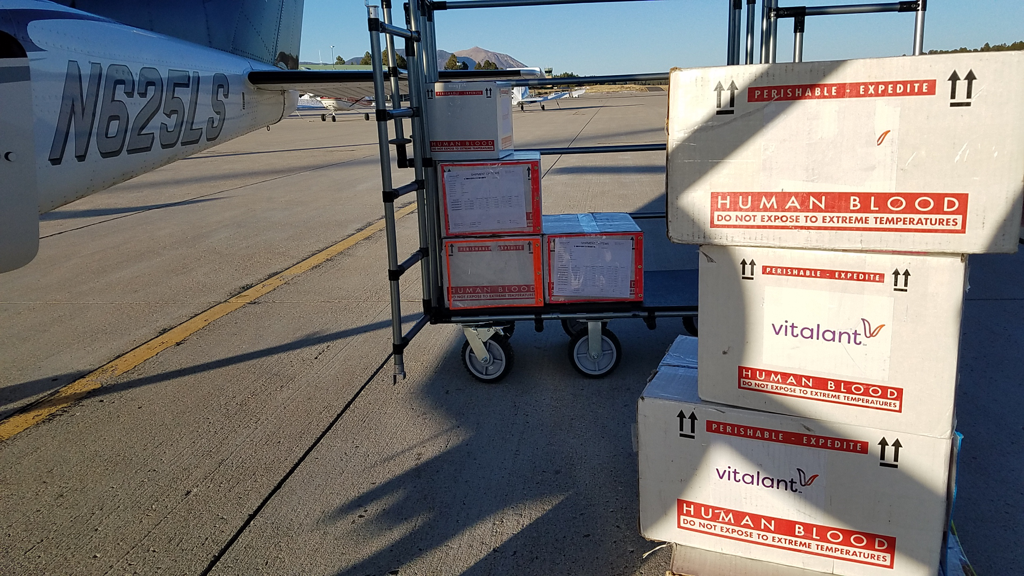
Links
-
Flights for Life is the Arizona organization that flies blood and blood products around the desert mountains. http://www.flightsforlife.org
-
Angel Flight West is the west-coast chapter of pilots that fly non-emergency medical relief flights for in-need passengers. https://www.angelflightwest.org